How to Start the Best Seedlings Indoors!
Starting your own seeds indoors is a great way to b more self-reliant and save money on your garden! This project gives you control over the fertilizers, pesticides, and potting soil used. Starting from seeds also gives you a huge number of varieties to choose from instead of just two or three varietes offered at the garden center.
You also have complete control over when you start seedlings. This gives you the option of starting cool-season crops early enough to get an extra harvest in the spring!
Learn How to Set Up a Seed Starting Calendar to track when to start your seeds for the best results.
I’ve been gardening since I was 3…I still remember helping my Dad plant bean seeds in our garden as a little tyke. I began growing my own seedlings in windowsills in the spring then created an easy seed starting set up that I also use for growing microgreens in the winter.
I also know what it takes to start seedlings on a commercial scale from my education and work in the horticultural field.
This post contains affiliate links or advertisements as a means for this website to earn income. As an Amazon, LLC affiliate, I earn a commission on qualified purchases made through these links.
Save 10% on your purchase of $20 or more from Mary’s Heirloom Seeds this year with Discount Code: HOMEACRE10 (Be sure to enter the discount code before you pay for your order! The code is good on any in-stock products and ends on 12/2/24)
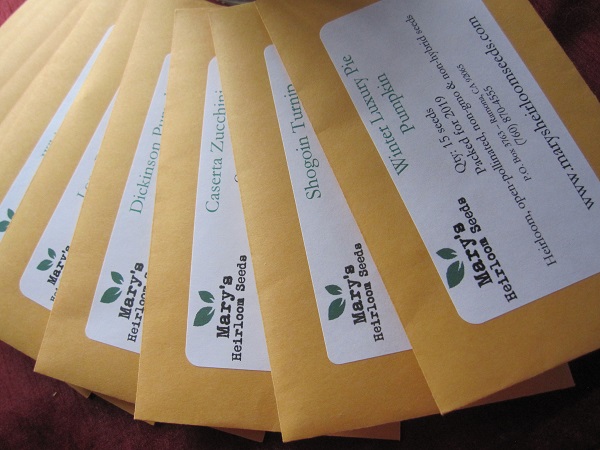
Why Start Your Seedlings At Home?
There are many reasons that gardeners decide to start their seedlings in a sunny windowsill or under lights in the late winter and early spring. Here are some of my reasons:
- Save money
- Reduce environmental impact
- Control over pesticides and fertilizers
- Plant a wider selection of varieties
- Green therapy!
- Grow microgreens
Save Money By Starting Your Own Seeds Indoors
The cost of greenhouse production is enormous. Besides the investment in the facility itself, there are costs for heating, cooling, watering, chemical applications, labor, growing medium, seeds, containers, and transportation. Once the flats reach the retail nursery they still need to be cared for – more labor. Plus, everyone wants to make a profit off those little plants. Of course, you pay for all of that when you buy seedlings.
There are expenses involved in starting your seedlings indoors. You’ll need grow lights, extension cords, a power strip, and a timer, plus a shelf or table for your setup. If you travel or are super busy, it might be better to just purchase your seedlings. However, the cost of one packet of seeds is usually about the same as one 6 pack of small seedlings or 1 pint-sized start. So you really can get a lot more for your money with this DIY project.
Control Over Fertilizer & Pesticide Application
You might be surprised at the volume of non-organic chemical applications used to produce those gorgeous flats of veggie and flower starts in commercial greenhouses. There are insecticides, fungicides, miticides, fertilizers, and hormones for regulating growth.
Some of the insecticides applied are systemic, which means that bees and butterflies are poisoned by the nectar from treated plants. Systemic insecticides are transported through the entire plant and none of this is listed on the label when you buy seedlings
Steps to Start Your Seedlings
This project might seem overwhelming at first, but if you take it step by step you’ll be off to a great start! Let’s begin with what you need for your indoor seed setup.
- Seeds
- Growing medium
- Containers
- Lights
- Miscellaneous (seedling heat mats, labels, fan, plant mister)
What Kind of Seeds Should I Buy?
There are so many choices – heirlooms, hybrids, organic. What should you buy? If you want to…
- save seeds from your plants for next year, you should choose heirloom or open-pollinated seeds.
- to grow the biggest tomato or most disease-resistant pepper, hybrids may suit your needs best.
- be sure that your seeds have not been treated with fungicides, choose organic.
- save money on food, choose seeds for crops that you enjoy growing, eating, and preserving.
- get the best results, find out what varieties do well in your growing conditions.
Should You Start All of Your Seedlings Indoors?
You probably won’t want to start all of your seedlings inside. Many crops do best when direct seeded into the garden. These include root crops, beans, peas, and corn. Some crops grow so quickly that you probably don’t need to plant them inside.
How Many Seedlings Should You Plant?
Figure out how much space you have for your favorites and how much you are likely to use before you plant an entire packet of eggplant. If you only like a little, don’t plant a whole flat. I still have trouble with this part, so don’t feel bad if you end up with more than you need! You can give some to neighbors.
When Should I Plant My Indoor Seeds?
This will depend a great deal on the type of seed and where you live. Start by checking the USDA Zones to find out the average date of the last spring frost in your zone. Mark the date on your garden calendar. (Be aware that this is the average date of your last frost, it will vary from year to year.)
Now, look at the seed packets for information. The packet shares a range of how many weeks before the last spring frost you should start the seeds. Count back on the calendar and make a note to start the seeds on the appropriate date.
For more information, check out my post How to Set Up a Seed Starting Calendar!
Picking the Best Potting Soil
Many people like to bring in some garden soil to start their little plants. If you do this, make sure you sterilize the soil to kill any pathogens that cause disease. Sift the soil through a screen and moisten (you don’t want it soaking wet). Spread the soil in baking pans and cover with foil. Place in your oven at 250 F and bring the soil temp up to 180 degrees F for 30 minutes. Be aware that the scent is kind of funky.
I prefer to use a growing medium that contains no soil because it drains better. You can purchase a ready-made mix, or make your own with 1 part finely milled peat moss, 1 part sterile compost, and 1 part vermiculite.
Coir is an environmentally friendly alternative to peat moss. I’m avoiding the use of peat moss because the peat bogs are home to endangered species. If you choose coconut coir in place of peat, you need to rinse it thoroughly 2 or 3 times before planting seeds.
Composted leaf litter is another great substitute for peat moss in your seed starting medium. If you have a lot of leaves you can save money by making your own potting ‘soil’.
Check out How to Start Eco Friendly Seeds!
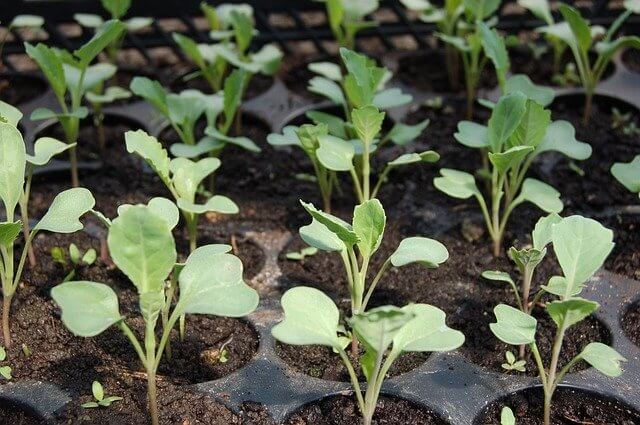
Choosing Containers for Starting Seeds
There are many kinds of containers for starting your little seedlings. It’s important to make sure they are clean (sanitize with mild bleach solution) and have drainage holes. You can use peat pots or pellets that can be planted along with the seedling. Mini greenhouse kits are also available. They look like the flats seedlings come in and include a transparent lid for retaining moisture.
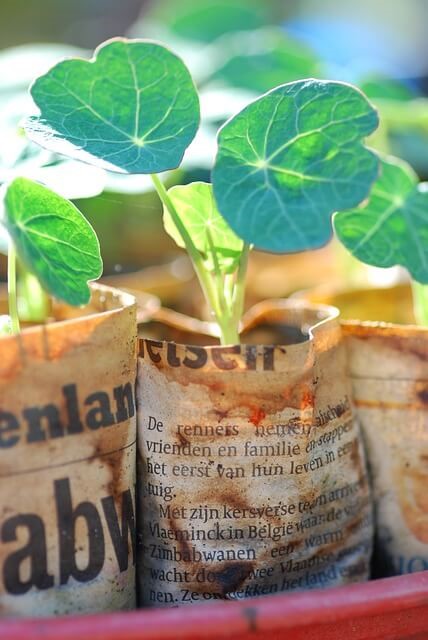
Recycled containers (plastic yogurt containers, the bottom half of milk cartons, plastic or paper cups, even newspaper pots) work great as long as they are clean and excess water can drain from the bottom. You can also make plantable newspaper pots with a handy form!
Choose the Best Grow Lights for Seed Starting
You can start your seedlings in a sunny windowsill, but I would start them a bit closer to your last frost date and be prepared to turn them every day to keep them from bending toward the light too much. They won’t be as strong as seedlings started under lights, so if you are planning to start seeds indoors every year I recommend setting up a seed starting station with grow lights.
I have a spot in my basement dedicated to starting seeds. A plastic shelving unit gives me room to start up to 10 flats of plants. Each shelf has a 4-foot long shop light hung from the shelf above by wires, allowing me to adjust the lights up and down. I am in the process of replacing the shop lights with full-spectrum LED grow lights that produce much stockier seedlings.
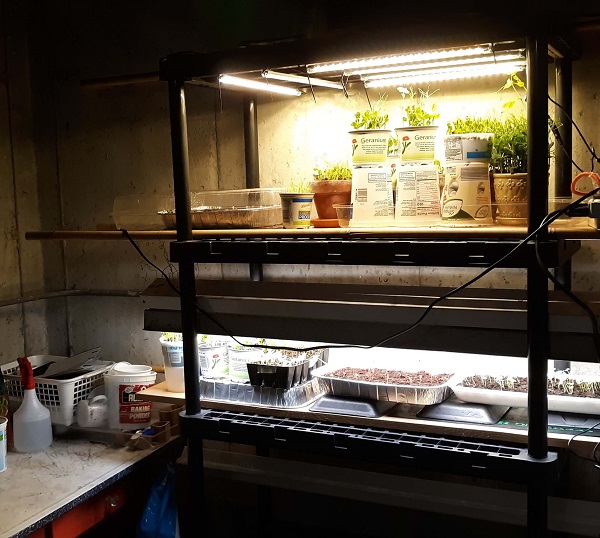
I’ve had good results with my seed starting setup for many years and it didn’t cost a lot to set up. It is advisable to replace fluorescent bulbs every year or 2 for the best results.
Plug your lights into a timer to come on for 12 hours each day.
Seedling Heat Mats
I’ve read all kinds of home do-it-yourself setups for providing bottom heat for the germinating seeds. All I can say is, please be careful! Make sure you aren’t creating an electrical hazard.
I purchased 2 seed starting mats years ago and they are still in great shape. I’ve saved many times the purchase price by starting my own seeds with these mats, so I have no complaints.
Make sure that the soil isn’t too hot for proper germination. Most seeds germinate best in the 65-85 F range. Check out this chart for optimal temps for different seed types.
How to Plant Seeds Indoors
Now that you have all of your seed starting supplies and your area is set up, you’re ready to go!
- Add water to the growing medium so it is damp, not soaking wet
- Scoop growing medium into your containers, leaving room to cover seeds with more soil
- Check the seed packets to see how deep to plant the seeds
- Sow 2 seeds in each pot in case one doesn’t germinate
- Water the seeds lightly and cover with clear plastic to retain moisture
- Label your containers with the crop and planting date
- Check each day for germination and moisture levels
- Don’t allow the soil to dry out
- As soon as the seeds begin to germinate, remove the plastic
- Check more often for moisture and water when the top of the soil dries out
- If more than one seed germinates, pinch the smaller one back
- Use a small fan to blow on seedlings and develop stronger stems
Some seeds take longer to germinate than others. Check the seed packet for the length of germination so you’ll have an idea of what to expect. See the note at the end of this article for instructions on testing seed viability.
Tips for Growing Your Own Seedlings
Damping-off is a fungal infection that causes the little plant to topple over and die. Closer inspection will reveal a pinched-looking stem just above the soil line. This disease is more common when the growing medium is kept too damp, too cool, or a non-sterile soil mix is used.
If it happens, toss them out and start over with new growing medium and freshly sterilized pots. Be sure to allow the soil surface to dry between waterings. Using a mister bottle will help prevent overwatering and mimic dew settling on the little plants.
As they grow, lightly brush your hand over the tops of the seedlings 2 or 3 times a day to help them grow stronger in anticipation of their move to the great outdoors.
How to Fertilize Seedlings
If you use a growing medium that contains a timed-release fertilizer for seedlings, you won’t need to provide any nutrients until they are transplanted into the garden. Otherwise, use a very weak solution of kelp or fish emulsion to water them once a week or so.
Don’t overdo it! It is very possible to ‘love’ your seedlings too much and burn their tender roots with too much nitrogen. Most fertilizer containers will give instructions for use on seedlings.
How to Harden Off Seedlings
As the date of your average last frost approaches, you’ll want to harden off the seedlings to get them ready for life in the great outdoors. Neglecting this step could expose your baby plants to extreme temperatures and wind that can kill them.
- Move seedlings outside on warm, mild days for a few minutes and place them in a protected spot out of direct light
- Increase their time outside each day, as weather allows, and don’t leave them out overnight until all danger of frost has passed and they are fully acclimated
- Check your seedlings often to prevent drying out or sunburn
- When the overnight temperatures are warm enough, you may transplant them into the garden
How to Transplant Seedlings in Your Garden
When the seedlings are ready to transplant to the garden, and the chance of frost has passed, make sure their new home is ready for them. Till the soil and prepare the bed.
- Water seedlings about an hour before transplanting so they’ll have time to soak up all they need.
- If they are root-bound, gently loosen the roots so they will grow out instead of in a ball.
- Plant at the same depth as they were in their pots. Tomatoes are one exception…they can be planted up to the newest set of leaves. Pinch off lower leaves and roots will form along the stems to get them off to a strong start.
- If possible, cover each seedling with a row cover or shade cloth to protect them while they adjust. Don’t cover them with anything that will heat up in the sunlight. Glass and black fabric may cook them, even on an overcast day.
- Water them well as their roots have been disturbed and won’t be able to absorb as much for a few days.
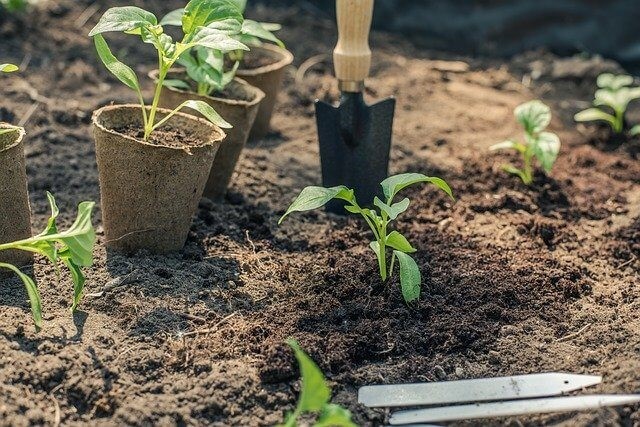
Get Hooked on Starting Seeds Indoors!
Starting your own flower and vegetable seedlings is a rewarding and fun process! Once you’ve got the hang of it, you’ll wonder why you ever bought starts from the nursery. Congratulations…you are officially addicted to gardening!
Testing Germination Rates
If your seeds are old, you may want to test their viability, or ability to germinate. Place 10 seeds on a damp paper towel and fold it over. Place the paper towel in a plastic bag and label it with the date and seed variety. Leave in a warm place and check every day.
Some seeds germinate quickly, like lettuce and cabbage. Some seeds, such as peppers, take longer to germinate. If the seeds have not germinated consistently after 2 weeks, purchase fresh seed to replace them.
Some seeds, such as parsnips, do not germinate well after just a year. Others will keep for long periods with no problem.
Hints for Starting and Transplanting Peppers
Pepper plants like heat. You will want to wait a couple of weeks or so after your average last frost date to transplant them into the garden. Warm the soil up with black plastic or black landscape fabric for a few days before planting peppers. Cover them if night-time temps are expected to drop down below 60 F.
Do you have any tips, hints, or tricks for starting your seedlings indoors? Leave a comment!



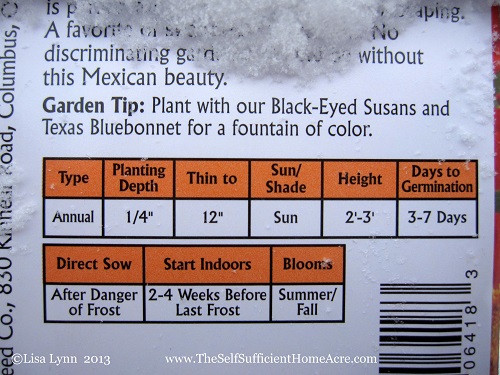
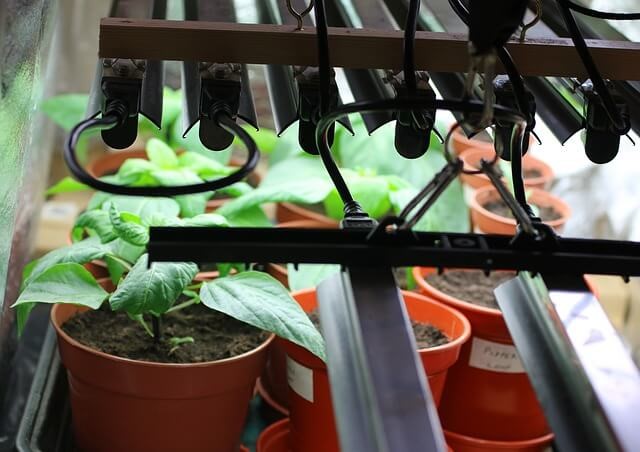
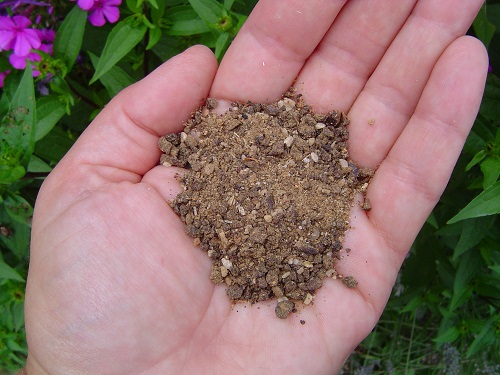
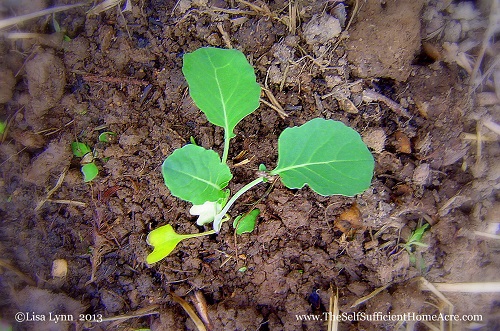
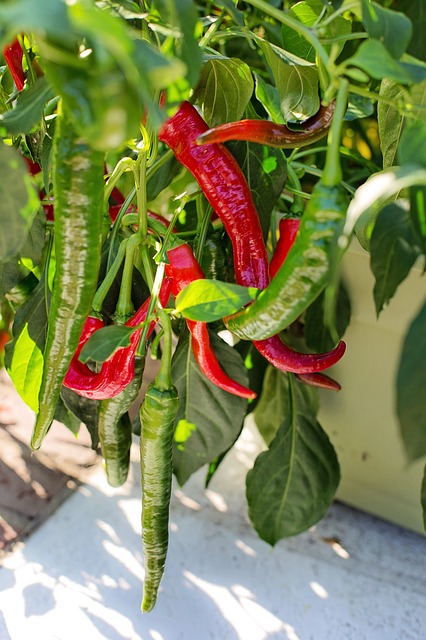
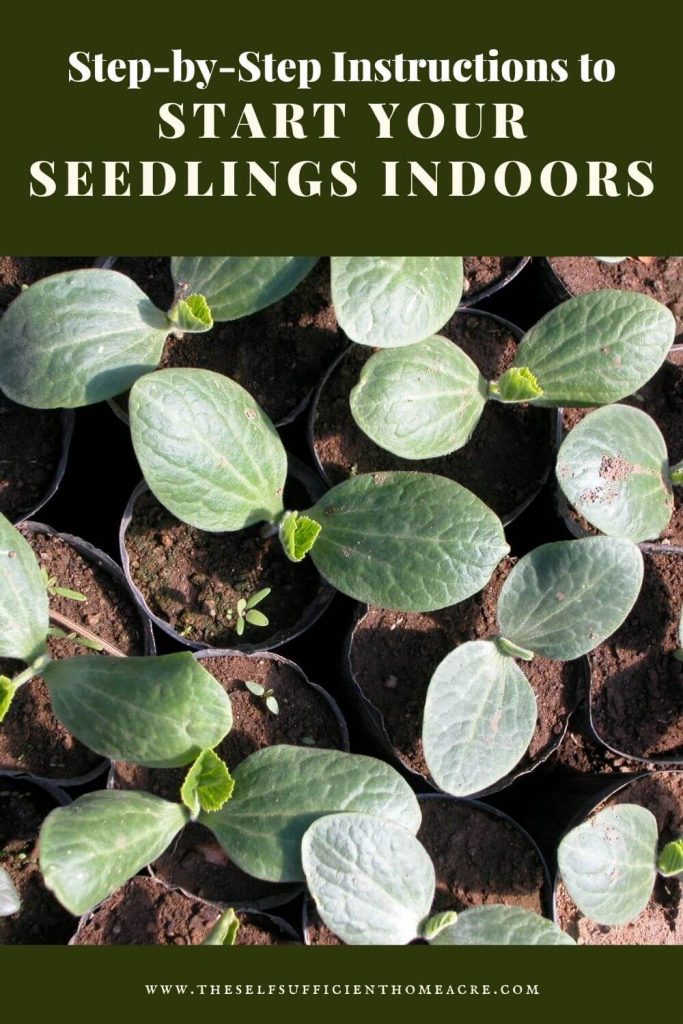
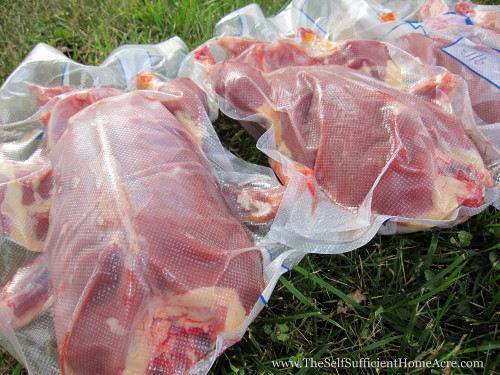

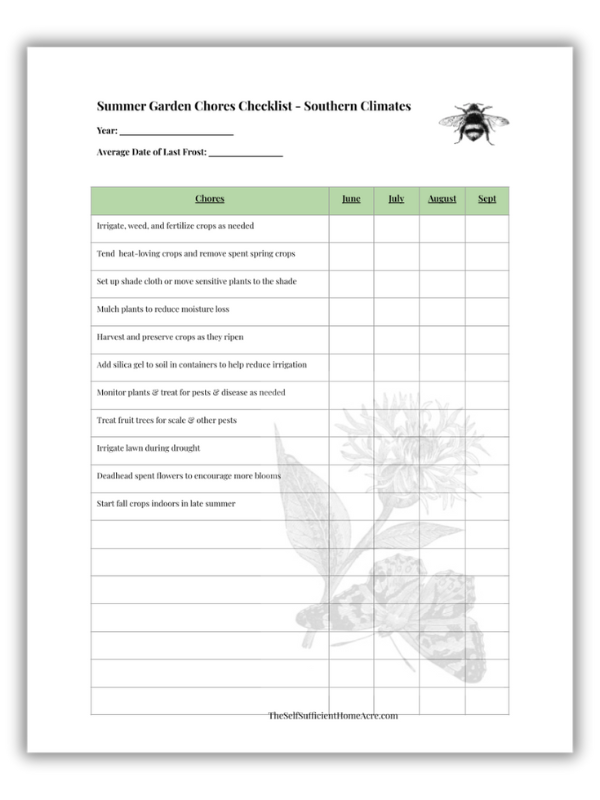

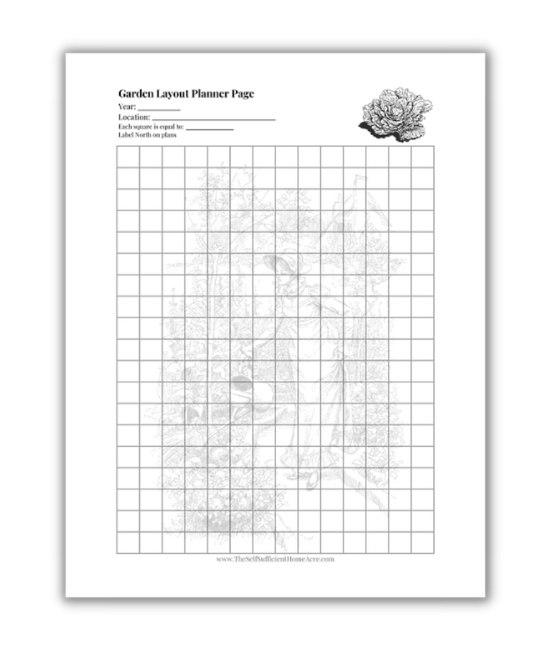

Your article is very thorough and helpful for a beginner. But also very useful for non-beginners too! Thanks for taking the time to put all of this together!
Laurie
Thanks so much, Laurie! I’m always happy to share!
Your explanations are the best I’ve seen for starting seeds indoors. After moving to a totally new USDA zone in North Idaho from California I found it difficult to grow anything last year. I was used to throwing the seed in the ground and watching it grow. Now I am learning how to plant a garden all over again. What an adventure this has been. So, thank you for your insight!
Hi Melanie,
Thank you! I’m honored to hear that! I can understand…there are so many differences in how to handle gardening across our country. When you stop to think about the sheer size of the US and all of the different climates we have, it’s pretty amazing!
I’ve always gardened in the north. I grew up in western NY and moved to northern Illinois 25 years ago…it’s similar here, but much hotter in the summer, colder in the winter, and windier all around. 🙂
Thanks so much for stopping by! Best wishes with your garden this year!
I’m starting my first garden this year and I really appreciate all the knowledge you share in this post. So helpful! Is it true you should start strawberries right outside? I bought a package of ten in a bag the other day and I’m not sure what to do with them. We still have snow on the ground in Indiana so I don’t know if I should go outside with them. And I have two blueberries bushes still in the containers. How long should I keep them inside until? Thank you for all your advice. I’ll be pinning this post and referring back often 🙂
Hi Elie,
Congrats on starting your first garden! Thanks for reading my post! Your strawberry plants may not do well if they are left in the package until the ground thaws. Most likely, they will rot. I would pot them up and keep them in a sunny window, water when the soil dries just below the surface. If you don’t have time to pot them, put the package in your refrigerator to keep them dormant. (if there is green growth, you should probably get them planted).
Are your blueberry bushes ones that you just purchased? I would keep them in a sunny window until the weather warms up. If they are actively growing (leaves are out), I would keep them inside until outside temps are in the 50 – 60 F range. Then you can plant them outside. You could move them out on warm days and bring them back in when it looks like frost until then.
Best wishes!
this is great, all the info and time you put into this, thanks
You’re welcome…and thanks for visiting!
I am located in Northwest Indiana. I’m worried this polar vortex will destroy my strawberries & asparagus! I also can not figure out when to start my seedlings. I usually begin March 1-15. I grow under my 8 skylights in my great room which give me the perfect temperature controlled greenhouse environment without the added expense! However we have adequate sunlight only about 1 day/week. Even my house plants seem semi dormant. My peace lily typically has 7-8 blooms during the winter only has 2 right now. Any suggestions? I can’t afford grow lights right now 🙁
Hi Micha Dee,
I hope your strawberries and asparagus are ok! If you planted hardy varieties, they should be fine. In the fall, you might want to put some leaves or straw over them to help protect them from the freezing and thawing…that is the hardest part for them.
You don’t need to go out and buy special grow lights to start your seedlings. If you have 1 shop light with a cool white bulb and a warm white bulb, that will provide a good spectrum of light without busting the budget. When I bought new bulbs last year, I think they were around $5 or $6 each. You can probably get along pretty well with bulbs from last year if the cost is too much right now.
I have my seed starting set up on a plastic shelving unit. I used wire to hang the light from the bottom of one shelf with the seedlings under the light. You can usually start 2 to 4 trays on one shelf.
Best wishes!
I noticed that you said people cannot copy your posts. Does that include printing them for my own personal use? I have been trying to print up posts that I might need to re-reference and putting them in folders by topic, so that I can find them easier if I need to look them up, rather than trying to remember when I saw them and then try to find them again. I was going to try to print up this post until I saw your warning.
By the way, reading the article I now know why all my little seedlings keeled over and died last year, thank you, will not make that mistake again, I hope. I do have one more question, which I did not see addressed: Do you keep the grow lights on 24 hours a day? I did that last year until I had gone through more bulbs than I could afford and said to Hell with that. I know I probably sound like the village idiot, but I have never seen anyone talk about how long you keep the lights on the plants at a time or if it is to be on until you put them outside.
Hi Gena,
I don’t mind if you copy my articles for your own use…I just don’t want people to copy them on their blogs, word for word, as if it’s their own work!
Good question about the lights! I forget sometimes to be as detailed, since I do this every year! I suggest having the lights on for 12 hours each day. Some plants are daylight sensitive and having a sudden change when you put them outside could trigger early flowering, before they are ready.
Thanks for asking!
Lisa Lynn,
Question for you. When you said cover the containers with clear plastic until the seeds germinate, what kind of plastic? Does it have to be store bought seed starting cover like the kits I’ve seen in the home improvement stores or can I use kitchen plastic wrap? First time seed starter, here. 🙂
Julie
Hi Julie,
Good question! Any type of plastic that is clean will be just fine. I have used the clear covers that come with the seed starting kit, and I have used plastic food wrap. The only problem with the plastic food wrap is that it can be a little difficult to spread out neatly over and over again. But it will do just as well as the purchased ‘dome’ covers.
Best wishes and feel free to ask any questions!
Thanks, Lisa, very comprehensive! I learned that I am doing a few things right, and a few things not so right, basically due to no set-up (no lights), and I’m in So. Cal. so I did take them out in the warm sun a few days. It’s only 55° today so they will stay put in my kitchen but not much light. At least it’s 65-70 in the house. If I start indoors next year, I will get a set-up as this has been rather a pain, haha. I hope you will check out “Late Bloomer,” my 40 episodes of my journey to learn to grow food. Thanks! https://www.latebloomershow.com/
Hi Kaye,
Thank you! Checked out your blog and signed up for you episodes 🙂
Best wishes with your baby plants and light set up!
Espectacular esa es una forma de mejorar nuestro planeta y vivir mas sanos, sus consejos son geniales
Muy amable 🙂 Gracias!
Thanks for this. This is a very helpful and informative post! I’m in the process of trying to learn more about seed starting, and this should be really useful as I look to engaging in my own seed starting adventures!
Hi Day by Day,
I’m glad that you found it helpful! Thanks for stopping by to let me know. 🙂 Best wishes and let me know if you have any questions about seed starting as you go!
Thanks for such a readable article. I have been growing veg for twenty years but you can always learn something new!
Hi Josephine,
Thanks for reading! Good for you…always glad to hear from another seasoned gardener!
Thanks for all the info!! I do have a question, maybe you have mentioned it in another post ? But do u plant in long rows or blocks or raised beds? We have been doing long rows ( our garden is approx 50×100 feet) and the weeding / hoeing between the rows is crazy! I’d love to try a Different way .. Have any tips?? Thanks so much !
Bethany
Hi Bethany,
Glad to share! I have permanent beds about 3 feet wide and up to about 25 ft long or so. I think I’m up to 12 beds like that now. I pick up cardboard from the grocery store to put down in the walking paths between the beds to help cut down on weeding and cultivating. The beds are planted pretty intensively and, in theory, I keep them weeded in between plants until the fill in. Last year was the ‘year of the weeds’ however and my theory fell apart somewhere in June.
I’d like to have raised beds and as the chicken manure composts down, I add it to the beds. So maybe someday they’ll all be raised up a bit.
You could look into the square foot garden…I think that his ideas make a lot of sense, although I’m not organized enough to follow the guidelines! Best wishes!
Thank you for all of the information that you have posted on your website. I just started gardening two years ago. I can’t wait to get started!- again!
That’s awesome, Mary! So glad to share and I’m happy to have you here! Best wishes with your garden this year!